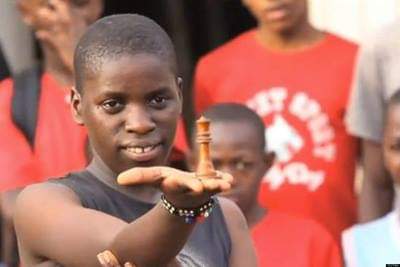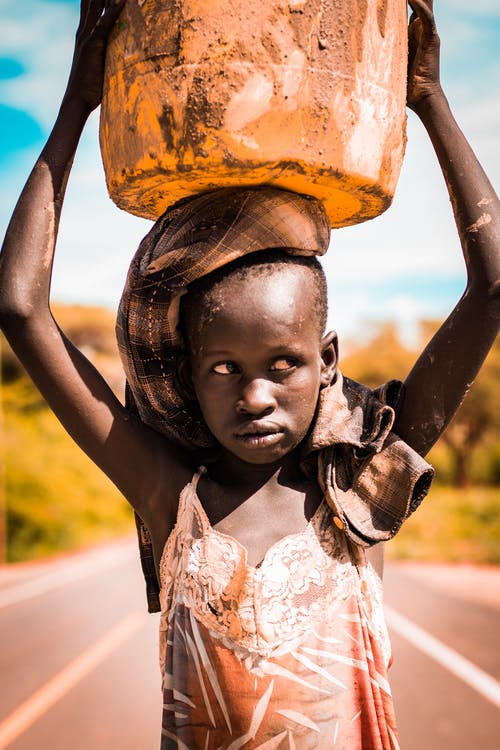We need to create more Queens of Katwe
The inspiration for the Disney’s ‘Queen of Katwe’ was a girl who lived in the largest slum of Kampala, Uganda. The film showcases the incredible determination of a girl, all that she had to overcome, and what many girls like her face each day.
This Queen of Katwe, Phiona Mutesi, has gone on to represent Uganda at four chess Olympiads and win three junior championships. However, she grew up with constant hardships, like many girls today. At the age of three, her father died of AIDS. Weeks later she lost a sister. At the age of nine she had to leave school as her family could not afford to send her there anymore. To help her family financially, she sold magazines in the street market.
She discovered chess when she followed her brother to a sports mission project run by Sports Outreach Institute. She returned to school and went on to finish secondary level education. During a later trip, to the US, she was offered a scholarship for Northwest University, Washington. She has been enrolled since there since 2017.

Despite her success, the reality is that that her mother, as a woman, could not make enough money to send her kids to school. Phiona’s entry into competitive chess was met with constant opposition because of her gender. Despite her impressive career in chess, she found it difficult to move her family from the slums of Katwe. However, this is only a glimpse into the struggle of many girls like Phiona.
The UN marked October 11th as National Girl Child Day in 2012. Along with it they introduced a theme for the year with 2018 being ‘With Her: A Skilled Girl Force’.
While we spend just a single day of the world raising awareness about the struggle of girls in our modern world, these struggles are the reality of girls every day. “Today’s generation of girls are preparing to enter a world of work that is being transformed by innovation and automation,” the UN says.

While there are not nearly as many research or development plans for girls, we do know that in 2016, more than 62 million girls around the world had no access to education, according to USAID. Girls, aged five to 14, spend more than 160 million hours more in household chores than boys do, at the same age, according to UNICEF. Globally one in four girls is married before 18, with the UN reporting that rural girls are twice as likely to becoming child brides than urban girls.
The prevalence of child labour is also a very serious risk to the quality of life for girls. One in five children in sub-Saharan Africa are forced to work in mines, quarries, and farms. Roughly 68 million of those in child labour are girls.
However, an educated child is much less likely to enter child labour and subsequently their future children are also less likely to. For every extra year a girl stays in school, her future income can increase by 11% according to Plan International. Yet, more than half of rural girls lack basic literacy skills.
The UN Women organisation also reported, in 2012, that gender inequality plays a major contributory role in hunger and poverty. The World Food Program Gender Policy and Strategy say that an estimated 60% of chronically hungry people are women and girls. Despite women making up 43% of the agricultural labour force, only 13% of agricultural landholders are women. This increases dependency on men, making them secondary in receiving food. In their report the UN stated: ‘Research indicates that when more income is put into the hands of women, child nutrition, health and education improves.’

The reality of girls’ struggles and dismal future can be improved primarily by the provision of education. Education can increase a girl’s future salary, her job opportunities, decrease her chances of child marriage, the risk of entering child labour, and positively impact her future kids. If women can then receive higher status from having had an education as a child, the likelihood of them receiving land ownership increases, improving her life and those around her.
While many organisations try to improve a girl’s quality of life, governments must also work towards improving the lives of their citizens through legislation. For example, the Ugandan government has implemented Universal Primary and Secondary Education, Women Entrepreneurship Program, Higher Education Students Loan Scheme and much more to reduce inequality. And, many other African countries have done the same, in an attempt to change societal oppression of women and remove harmful legislation.
With such a widespread and devastating issue that is inequality of girl children, more awareness needs to be created, and more actions taken. Many organisations like Feed A Million Mouths International are trying to tackle these problems and help girls just like Phiona Mutesi rise above circumstance.
Help FAMMI play its part in supporting girls and women in Uganda through our ‘Buy Breakfast’ initiative – https://paintandparty.org/buy-breakfast.
*Facts and figures are drawn from the inter-agency report, “Rural Women and the Millennium Development Goals, produced by the UN Inter-Agency Task Force on Rural Women, unless other sources cited.
About the author:
Sonja Tutty is a 20-year-old student in Dublin City University. She loves reporting on a range of topics, from news and lifestyle and from beauty to sports. Her real passion lies in writing articles that raise awareness for marginalised people and people groups, and working with organisations like FAMMI that aim to help.

Like!! Great article post.Really thank you! Really Cool.